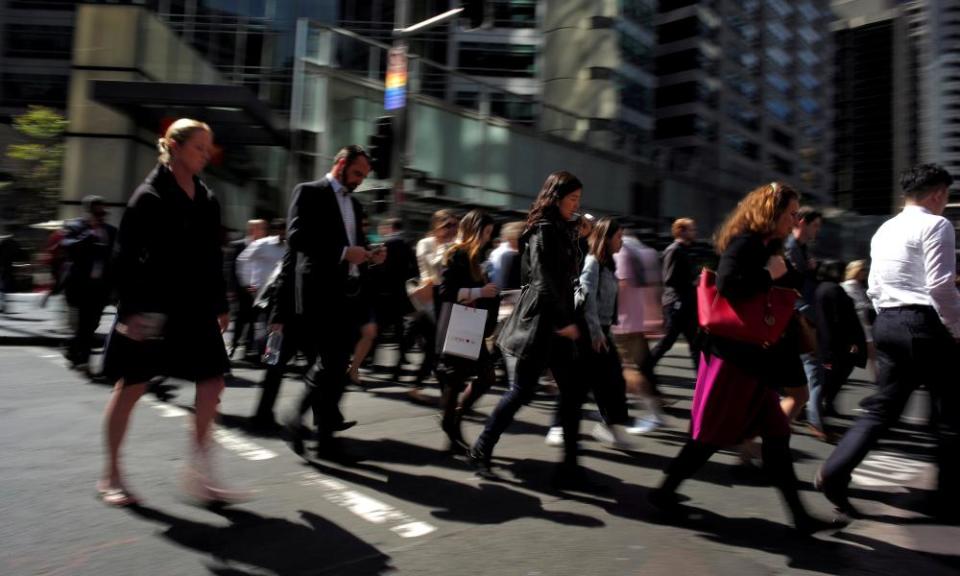Australia's unemployment rate at 5% after faster than expected fall

Australia’s unemployment rate is falling faster than anticipated, dropping sharply to 5% last month.
The larger than expected decline in unemployment means the labour market is now meeting the Reserve Bank’s definition of “full employment”, the so-called non-accelerating-inflation rate of unemployment (NAIRU), though economists say it may still not be enough to spark noticeable wage rises.
Figures show the unemployment rate fell to 5% in September, from 5.3% in August, hitting the lowest level in six-and-a-half years.
In seasonally adjusted terms – a statistical technique that removes the effects of seasonal variation in employment – the number of employed persons increased by 5,600 last month, which was much weaker than the 45,000 new jobs in August.
It means the average increase in new jobs in the past three months has slowed to 15,000, down from 46,000 in January.
But it was still enough to push the unemployment rate down to its lowest level since April 2012 (with some help from a sampling rotation, and a small decline in the participation rate from 65.7% to 65.4%).
The prime minister, Scott Morrison, welcomed the news about the unemployment rate, saying 1.15 million jobs had been created in the past five years.
“60,000 fewer people are unemployed today than at the last election,” he told parliament.
Economists say it is clear the labour market is tightening faster than anticipated.
“In terms of the RBA, officials have previously stressed the data can prove volatile on a month-to-month basis so we doubt they will make any clear policy shifts based solely on today’s number,” JP Morgan economist Tom Kennedy wrote to clients on Thursday.
“Nevertheless, this result should not be dismissed and, should this outcome be ‘locked-in’ in coming months, then the market would have to acknowledge that progress toward the RBA’s objectives, which has been very slow for many years, now appears more rapid.”
According to the NAIRU, if unemployment keeps falling below this point then inflation and wages ought to start rising.
However, the NAIRU is difficult to pinpoint, because it can shift up and down with changes in the structure of the labour market, and some economists believe the NAIRU needs to be closer to 4% for wages to start rising seriously.
“Our view is that 5% is not the magic number and that the unemployment rate may need to fall closer to 4% to trigger a decent rise in wage growth,” the chief economist of Capital Economics, Paul Dales, wrote on Thursday.
“Of course, as the amount of spare capacity in the labour market continues to decline, wage growth will probably edge up.
The unemployment rate may need to fall closer to 4% to trigger a decent rise in wage growth.
Paul Dales, Capital Economics
“And the fall in the unemployment rate increases the chances that the RBA will want to raise interest rates sooner, but we suspect it may still keep its powder dry until late in 2020.”
Data showa the annual rate of job creation is still a healthy 2.3%, with trend employment growth sitting on 26,000 a month – well above the 17,000 needed to keep putting downward pressure on the unemployment rate.
On Wednesday, the RBA deputy governor, Guy Debelle, said Australia’s jobs market was in “pretty good shape” with many indicators suggesting wages should be growing more quickly, but Australia’s employers were finding inventive ways to avoid lifting wages for their staff as the economy improved.
He said employment growth was above average, the participation rate was at a high level, the vacancy rate was at an all-time high and the unemployment rate was still trending down.
“Some firms are attempting to retain staff by using non-wage incentives, including flexible work arrangements, shares, subsidised gym memberships, development opportunities and additional annual leave,” he said.

 Yahoo Finance
Yahoo Finance 